Hi, I’m Michael Zhang. As a traveler with a deep passion for cultural exploration, I have visited dozens of countries and regions, always drawn to places rich in historical depth and human stories. This time, I’ll take you to one of Guangzhou’s most treasured sites—the Temple of the Six Banyan Trees, a thousand-year-old Buddhist temple that blends spiritual art, Lingnan architectural aesthetics, and the living memory of the city. I hope this ancient temple offers you a moment of peace and reflection.
Summary
- Temple of the Six Banyan Trees
- Temple of the Six Banyan Trees Map
- Why You Should Visit the Temple of the Six Banyan Trees
- Top Things to Do in the Temple of the Six Banyan Trees
- Recommended Hotels Near the Temple of the Six Banyan Trees
- How to Get to the Temple of the Six Banyan Trees from Downtown Guangzhou
- FAQ
Temple of the Six Banyan Trees
The Temple of the Six Banyan Trees was originally built during the Liu Song Dynasty of the Southern Dynasties period (420–479) and was first named Baoyuanzhuangyan Temple. It covers a total area of 13,500 square meters and features the Flower Pagoda, a brick tower in the form of a pavilion, with an octagonal base, facing south. From the outside, the pagoda appears to have nine levels, but there are hidden internal floors between each pair, making a total of 17 layers. The niches in the tower house thousands of Buddha statues, which is why it’s also known as the Thousand Buddha Pagoda. The temple also includes a bronze statue of Master Huineng, the Sixth Patriarch, as well as a historical plaque inscribed with the characters “Six Banyan.”
- Address: No. 87, Liurong Road, Yuexiu District, Guangzhou (Apple Maps/Amap)
- Opening hour: 8:00–16:30 (extended to 17:30 on weekends and Buddhist holidays)
- Suggested visit time: 2 to 3 hours
- Recommended season: All year round
- Ticket Prices: Free
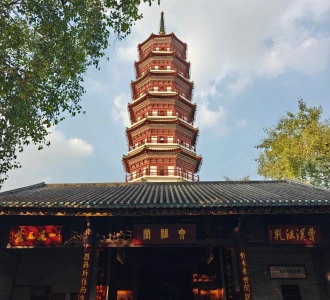
Temple of the Six Banyan Trees Map
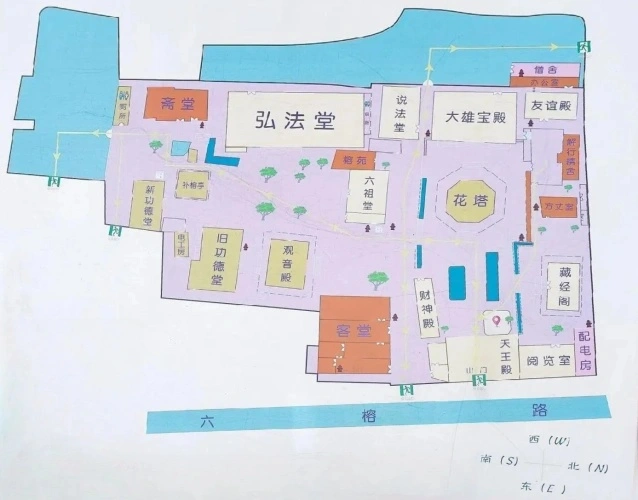
Why You Should Visit the Temple of the Six Banyan Trees
Great Location
It is located in the urban center. If you’re staying near Gongyuanqian Metro Station, it’s basically a must-visit. Since this metro area is where many tourists choose to stay in Guangzhou, the Temple of the Six Banyan Trees naturally attracts a high number of visitors.
Profound History and Cultural Significance
Its history dates back to the Liu Song Dynasty, when it was first known as Baoyuanzhuangyan Temple. During the Liang Dynasty, Master Tanyu built a pagoda to house Buddhist relics gifted by Emperor Wu of Liang, marking the official founding of the tower. Later, the Tang scholar Wang Bo wrote the “Inscription for the Pagoda of Baoyuanzhuangyan Temple in Guangzhou,” which elevated the temple’s historical status.
Unique Architectural Style
Particularly its Flower Pagoda, which was originally built in the Liang Dynasty as a wooden tower, then rebuilt during the Northern Song Dynasty using a brick-and-wood structure. Despite undergoing multiple restorations, it still retains the distinctive architectural style and charm of the Song Dynasty. The Pagoda of the Temple of the Six Banyan Trees—also known as the Flower Pagoda or Thousand Buddha Pagoda—is the temple’s signature landmark. The staircases feature layered geometric cornices, showcasing essential techniques in ancient pagoda construction.
Top Things to Do in the Temple of the Six Banyan Trees
Main Attractions
Six Banyan Pagoda
The Six Banyan Pagoda, also known as the Flower Pagoda or the Thousand Buddha Pagoda, is the symbolic centerpiece of the Temple of the Six Banyan Trees. Built during the Northern Song Dynasty, this pagoda is a classic multi-eaved brick structure. Though it appears to have nine levels, it actually has a total of seventeen alternating visible and hidden layers. With its elegant octagonal design and upward-reaching silhouette, the pagoda exemplifies the architectural aesthetics of ancient Lingnan towers. The niches inside the tower house thousands of Buddha statues, which is why it’s also referred to as the Thousand Buddha Pagoda.
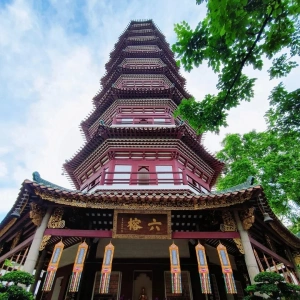
Mahavira Hall
The Mahavira Hall is the temple’s most magnificent and solemn main hall, enshrining statues of Shakyamuni Buddha, Medicine Buddha, and Amitabha Buddha—representing the Buddhas of the past, present, and future. The hall’s architecture is grand yet traditional, with towering golden pillars and gracefully curved eaves. Every architectural detail reflects the hallmarks of Buddhist temple design from the Ming and Qing Dynasties. It is not only a spiritual center but also a key site for visitors to understand Buddhist teachings and rituals. A quiet moment here is recommended, allowing you to absorb the solemn ambiance or sit in stillness and listen to your inner voice.
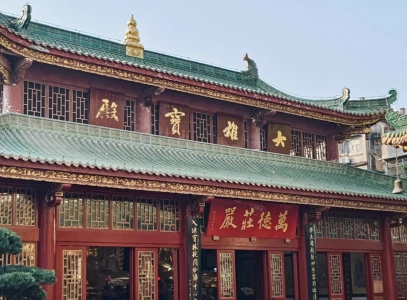
Guanyin Hall
Guanyin Hall is located on one side of the temple and enshrines the compassionate Bodhisattva Avalokiteshvara (Guanyin). The statue has a serene expression and dignified posture, making it the focal point of devout worship for many visitors. This hall serves not only as a sacred space for prayer but also as a spiritual symbol of compassion, wisdom, and salvation. The relief sculptures on the exterior walls depict various stories and incarnations of Guanyin. Take your time to appreciate these carvings for a deeper understanding of Guanyin’s cultural significance in popular belief.
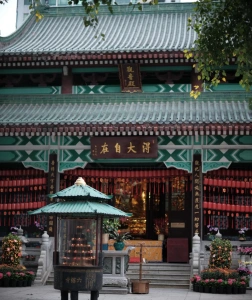
Recommended Visiting Route in the Temple of the Six Banyan Trees
To follow the Buddhist tradition of “no turning back when worshiping,” the suggested route is: enter through the main gate → Six Banyan Pagoda → Mahavira Hall → Guanyin Hall → Tudi Gong (Earth God Shrine) → Sixth Patriarch Hall → Medicine Buddha Hall → Merit Hall → exit.
Blessing Guide at the Temple of the Six Banyan Trees
The most common forms of blessings in the temple are incense offerings and walking around the pagoda. If you prefer not to buy incense, walking around the pagoda is also a widely practiced form of prayer. Additionally, you can light a blessing lamp or hang a wish plaque, though those are more costly.
- Incense Offering: There are nine incense burners in the Temple of the Six Banyan Trees. You may light either 1 or 3 sticks in each burner. For the three main halls—Six Banyan Pagoda, Mahavira Hall, and Guanyin Hall—offering 3 sticks is recommended. One stick symbolizes sincere devotion to the Buddha, while three represent reverence to the Triple Gem: the Buddha, Dharma, and Sangha. Sets of 3, 9, or 18 incense sticks can be purchased at the temple gate or to the left of the pagoda, costing 20 CNY, 60 CNY, and 118 CNY respectively. Outside incense is not allowed. The temple uses eco-friendly sandalwood incense. Simply light it with the butter lamps beside each burner, extinguish the flame gently, and lay the incense flat inside the burner to signify peace and safety.
- Walking Around the Pagoda: You may walk around the pagoda 1, 3, 7, or 9 times—any odd number. The more laps you make, the more sincere the offering is considered. Walking the circle is also a way to calm your mind, so if you have time, it’s worth going a few extra rounds.

Recommended Vegetarian Food Near the Temple of the Six Banyan Trees
The temple is well known for its vegetarian meals, especially before noon. Vegetarian lunch is served before 12:00 pm for just 6 CNY per portion. You can also try their famous noodle dish with sauce for 16 CNY. In addition to the main dining hall, there are also stalls that sell steamed buns inside the temple grounds.
Six Banyan Temple Dining Hall
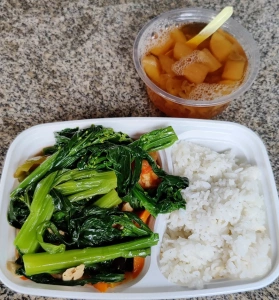
- Recommended because it’s a rare opportunity to dine inside a temple—highly worth trying.
- Address: Six Banyan Temple Dining Hall
- Business hours: 11:00–13:30
- Price per person: 6 CNY
Recommended Hotels Near the Temple of the Six Banyan Trees
If you want to stay close to the Temple of the Six Banyan Trees, it’s recommended to stay in Yuexiu District. Yuexiu suits the vast majority of tourists, and it’s especially ideal to stay near Gongyuanqian Metro Station. This area connects Metro Lines 1 and 2, making it very convenient to reach most of Guangzhou’s popular attractions, and it’s surrounded by a wide variety of food options. It’s located very close to the Chen Clan Ancestral Hall, Beijing Road Pedestrian Street, the Sacred Heart Cathedral, and the Pearl River Night Cruise dock. It’s also convenient to visit the Canton Tower, Guangzhou Opera House, Guangdong Provincial Museum, and Baiyun Mountain Scenic Area. Additionally, getting to and from Guangzhou Baiyun Airport is also very convenient.
CityNote Sino Hotel (Guangzhou Beijing Road Memorial Hall Metro Station)
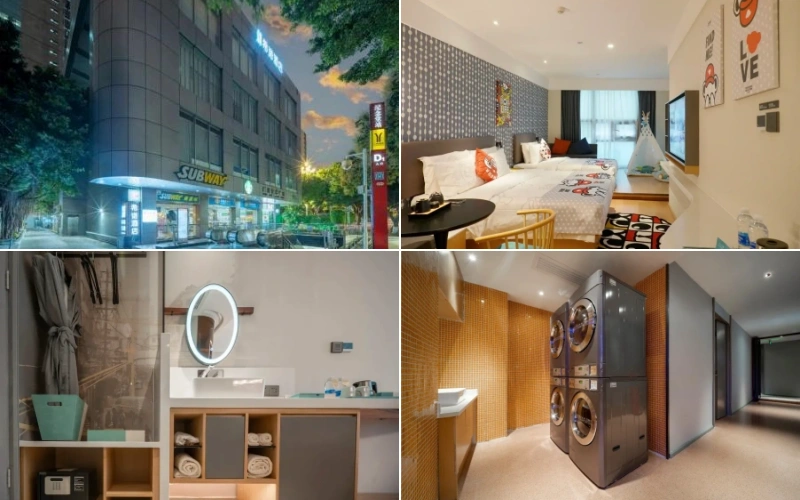
- Location: 5-minute walk to Memorial Hall Metro Station, 10-minute walk to Yuanquian Metro Station.
- Price Range: 349 RMB
- Check Room Rates: Trip.com Specials
- Rating: 4.6 on Trip
- Special Amenities: Gym, laundry room, triple rooms
Excellently situated near the A exit of Memorial Hall Metro Station. Starbucks and 7-11 are right downstairs, providing great convenience for accessing Beijing Road, Chen Clan Academy, and other attractions either by walking or a short taxi ride. Additionally, it’s a direct ride from Guangzhou South Station on Metro Line 2 without any transfers.
The rooms are satisfactory and comfortable. Although small, they are fully equipped with all necessary amenities. Delicious late-night porridge is also available.
Ying Shang Hotel (Guangzhou Beijing Road Pedestrian Street)

- Location: 9 minutes walk from Yuanquian Metro Station
- Price Range: 350 RMB
- Check Room Rates: Trip.com Specials, Compare on Klook
- Rating: 4.7 on Trip
- Special Amenities: Gym, laundry room, robot room service
The hotel is well positioned near Gongyuanqian Metro Station, nestled in a quiet area despite its proximity to the lively surroundings. Directly opposite the Yuexiu District People’s Government. Attractions like Beijing Road, People’s Park, and the Sun Yat-sen Memorial Hall are nearby, with the South Vietnam King Museum just a 10-minute walk away. The metro is also within short walking distance, with numerous dining options available just downstairs.
The hotel maintains a clean and orderly environment. The rooms are not only clean and odor-free but also offer a tranquil atmosphere that allows guests to quickly escape the hustle and bustle. Additionally, the breakfast is quite extensive and the service is exceptionally attentive.
Guangdong Guest House
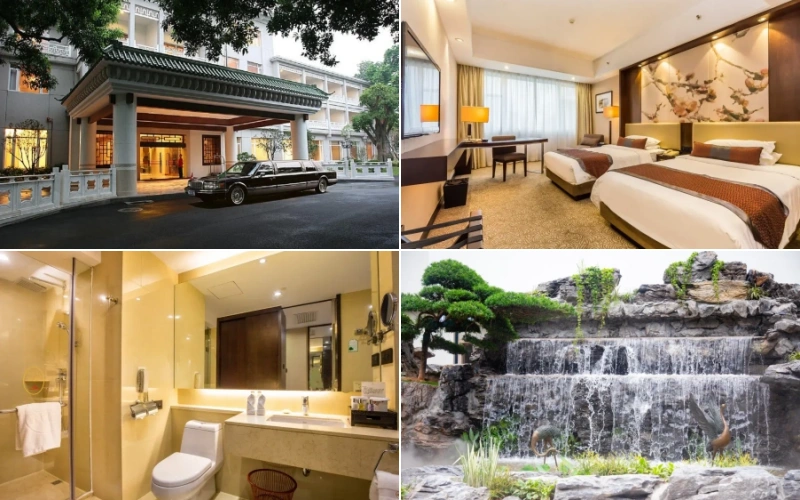
- Location: 8 minutes walk from Yuanquian Metro Station, 12 minutes walk from Memorial Hall Metro Station
- Price Range: 591 RMB
- Check Room Rates: Trip.com Specials, Compare on Klook
- Rating: 4.8 on Trip
- Special Amenities: Gym, paid indoor swimming pool, triple rooms, family rooms
The Guangdong Guest House, situated on the site of a former royal residence, boasts a rich historical heritage. It is conveniently located for taxis and also near a metro station for those concerned about traffic. The hotel is also a short walk, approximately fifteen minutes, from Beijing Road Pedestrian Street.
Although the hotel’s exterior shows its age, the rooms are newly refurbished, spacious, and very clean. The beds and pillows are particularly comfortable. The hotel’s restaurant offers excellent dishes, especially the traditional Guangzhou morning tea.
How to Get to the Temple of the Six Banyan Trees from Downtown Guangzhou
The most convenient way to get to the Temple of the Six Banyan Trees from downtown Guangzhou is by metro. Just get off at Gongyuanqian Station, and it’s only a short walk to the temple.
Metro
Take Metro Line 1 or Line 2, get off at Gongyuanqian Station, use Exit I2, and walk for about 8 minutes to reach the Temple of the Six Banyan Trees.
Bus
Take a bus and get off at Liurong Road Station or Sun Yat-sen Memorial Hall Station. From there, it’s just a 3-minute walk to the temple.
Taxi / Ride-hailing
A taxi ride from downtown Guangzhou to the Temple of the Six Banyan Trees usually takes less than 15 minutes and costs around 20 CNY.
FAQ
Yes, most of the temple grounds are flat. Although there are a few steps in certain areas, overall it’s accessible for strollers and wheelchairs.
There is no luggage storage service at the Temple of the Six Banyan Trees. Since visiting the temple typically takes a short amount of time, luggage storage is not necessary—it’s easy to finish your visit and move on quickly.
Essential Guangzhou Travel Resources
- Comprehensive Guangzhou Travel Guide 📖
- Guangzhou Travel Recommendations 🏙️
- Hotel Recommendations 🏨
- Transportation Guides ✈️ 🚇 🚄 🚆
- Essential Travel Tips & Tools 🗺️ 🍜 📱 💸 🌤️ 💊

 English (US)
English (US)
 繁體中文
繁體中文 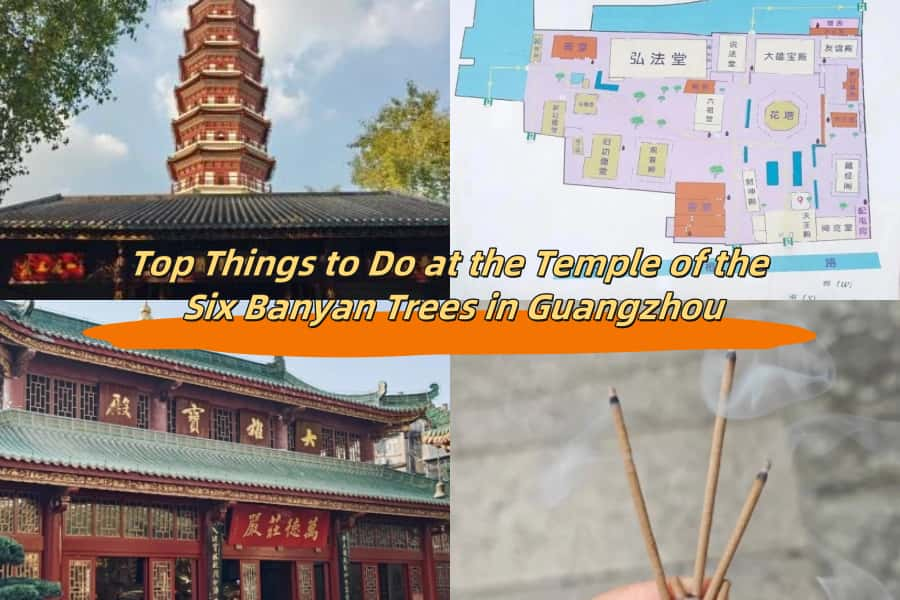
Comment (0)